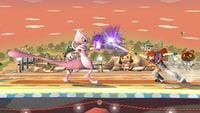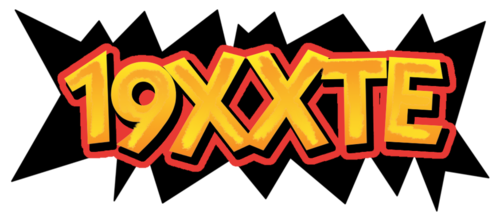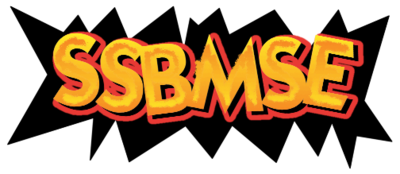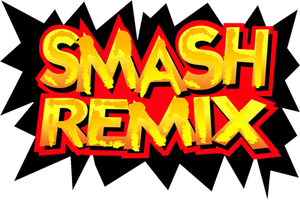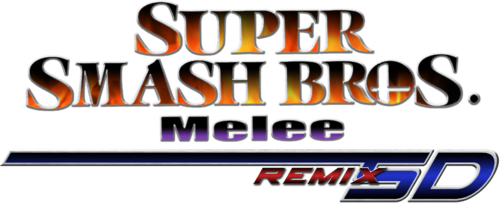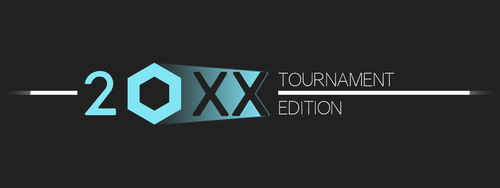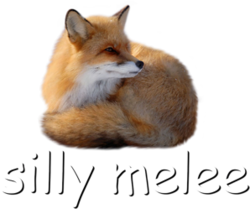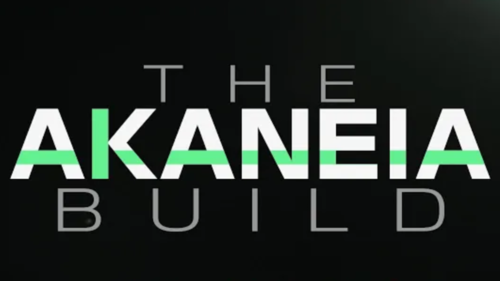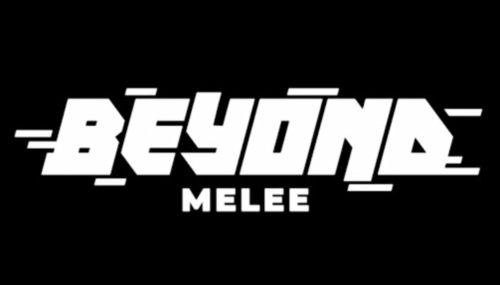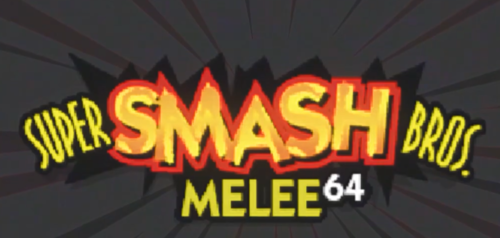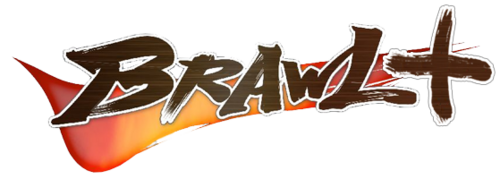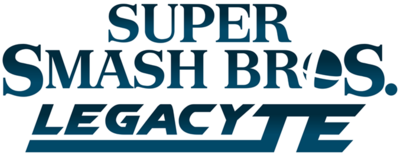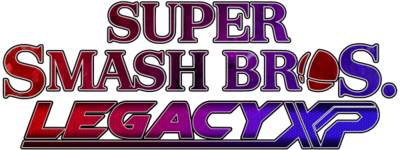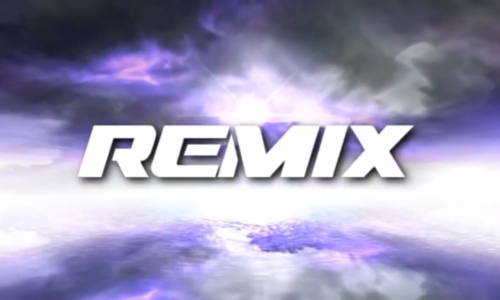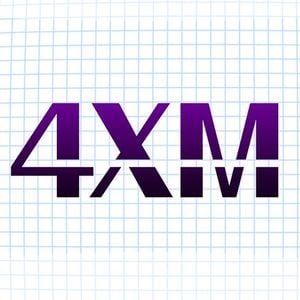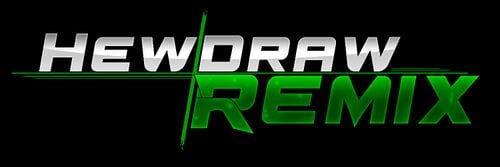Gameplay modification
Gameplay modification, often shorthanded as mod, is a blanket term for unofficial hacks and code alterations that change one or more aspects of the original, or "vanilla" version of a game. The term "vanilla" comes from a common terminology featured in the computing world. Mods range from simple cosmetic changes to total engine and gameplay overhauls that result in the game functioning completely differently.
Overview
Specific changes to the game depend on the preferences of the developers, as well as their ultimate goal. There are a few different categories most mods fall into:
- Balance mods usually don't significantly change the core gameplay and apply buffs and nerfs to characters to reduce competitive inequality between characters.
- Overpowered mods give every character huge buffs so that they are all equally overpowered.
- Melee-inspired mods change the gameplay and movesets to be more fast-paced and technical like in Melee, sometimes adding mechanics such as wavedashing.
- Competitive mods don't change anything gameplay-wise, but add features for players to practice their skill and/or improvements for tournament play, such as quality of life changes.
- New character mods that introduce new characters into the game with new 3D models, animations and movesets, either replacing another character or being a new addition.
- Skin mods add new Alternate Costumes to characters using File Replacement/Addition.
- Silly mods change characters or game mechanics in certain ways to result in humorous outcomes, like modifying characters such as Ganondorf to have their moves stretch to absurd proportions (which was likely inspired from the Gum Gum Fruit). Silly mods often times have overlap with Overpowered mods.
The first attempts at modding involved Brawl, with such projects generally being viewed as novelties, such as palette swaps for characters and UI changes. Outside of this, forcing the Wii to load such mods was considered difficult, requiring use of the now-inoperable Twilight hack. The increasing complexity of game play mods and the discovery of the Smash Stack exploit, however, caused mods to develop considerably more attention with observers.
Brawl remains the most commonly modded game in the series, primarily utilizing the Smash Stack exploit, though alternate methods for loading them are available. Mods for Melee often require the use of applications available for The Homebrew Channel. 19XXTE, a gameplay mod for Smash 64, requires patching a ROM image of the game. Mods for both versions of SSB4 involve the use of kernel exploit chains on their respective consoles primarily using Layered File System (LayeredFS) patchers to overwrite parts of the game's filesystem. Mods for Ultimate require a Switch console released before July 2018 to utilize a recovery mode exploit left over from the development phase of the console, enabling the use of code hooking and file replacement via the Skyline executable patch.
Stages
In addition to raw gameplay, other portions of the game may be overhauled by developers to further change gameplay. The changing of stages is among the more common ways to do this:
In 64
19XX modifies the stage selection screen to contain otherwise unplayable in versus mode stages Battlefield, Final Destination, and Meta Crystal. 19XXTE 's selection screen contains 11 instead of the original 9 slots for stages, and 19XXCE has 16 slots.
In 2018, modders found a way to change stages, first only replacing Hyrule Castle, but later it became possible to replace all stages. The mod SSBMSE replaces most stages in the game with more competitive stages modeled after their appearance in other Smash games.
Smash Remix is the most recent mod, and as of Patch 1.1.0, it includes five pages of stages, including stages from newer Smash games and brand new custom stages.
In Melee
While one of the less popular entries in the series for mods, some have been created over the years. SD Remix, released in 2015, features 3 pages of stages: One for the vanilla stages, one with 1-player mode-only stages, and one for newly created stages, with some inspired from other games.
Adding stages to Melee quickly escalated after the m-ex engine added the possibility to import custom stage models with separate slots, as well as custom high poly models over existing ones.
In Brawl
Brawl is the most commonly modded game in the series due to Smash Stack exploit, which makes modding the game much easier to the average player. In these mods, it is common to new stages, often replacing others, that have been made by fans. It is also possible to use newly created slots on the stage selection screen or alternative stages that load when holding a specific button when selecting a stage.
Brawl- and Project M, for instance, replace the ordinarily over-sized Temple with a smaller, more condensed version. Stages with transformations like Castle Siege or Pokémon Stadium are often changed to stay at the most competitive form of the stage. Outside of this, unpopular stages might be entirely replaced with others, such as how Project M replaces the highly non-standard Mario Bros. with a rendition of Fountain of Dreams from Melee.
Legacy TE added stages with the design of stages used for competitive play for each stage, using their theme in background models and textures and playing the same background music, that load when holding the Start, L, or Z button. Legacy XP added over 700 new stages into the game using new slots on the selection screen, as well as variants when holding down specific buttons. Button Shortcuts to quickly select popular Project M stages have also been added. Smash 2 added all stages that were in Melee' back into the game.
Outside of stage layout changes, some textures and tracks may be replaced, particularly in the case of original stages.
In Brawl-, the stage Temple has been significantly condensed compared to its vanilla counterpart.
In Project M, the same stage layout was used to make the Skyloft stage.
The Brawl stage Delfino Plaza remade with BrawlBox adding a lot of missing elements like the Grand Pianta Statue, the Red Canon to Pinna Park, and more compared to its vanilla counterpart.
In Smash 4
Creating new stages is possible in Super Smash Bros. for Wii U.
In Ultimate
Creating new stages is possible in Ultimate, though stage collisions have new properties that cannot currently be edited by the Smash 4 stage collision editor.
Any use of new stages in Ultimate will result in disconnection, or a possible ban depending on the user and how often attempts to go online happen.
It is currently not possible to add completely new stages without replacing existing ones.
Gameplay adjustments
Gameplay adjustments are changes to the engine, character movesets, and various other aspects of the game that are intended to be changed to a different vision for the game in question.
In 64
Smash Remix is one of the few mods for Smash 64 that would count as a Gameplay Adjustment. The original 12 characters and the mechanics of the game are unchanged, however, it mainly adds 16 new fighters (alongside 6 new boss characters), 63 new stages (with about half of them being original), and many various new gamemodes, like All Star and Home-Run Contest.
In Melee
Beyond Melee is also one of the few mods for Melee that change up the gameplay. Beyond Melee changes mechanics of the game, changes the balancing of characters to try and rebalance them, alongside adding new fighters. Characters like Bowser and Zelda, notable for being nigh unusable in the base game, were given many buffs in order to make them more viable, with some like Zelda and Ness receiving complete overhauls. There are also 7 newcomers to the mod, being Skull Kid, Fay, Wolf, Raichu, Shadow Mewtwo, Sonic, and Meta Knight.
In Brawl
Project M is one of the many modifications made to Brawl, due to it's accessibility for modding capacities. It's also the most popular modification for the game, due to it changing Brawl's engine to be more like that of Melee, alongside extensive rebalancing of the cast. Many fighters got new moves and overhauls. Examples of these overhauls include:
Mario: Became a mix of the best of both Melee Mario and Melee Doctor Mario, such as making the early hit of Fair extremely strong, like Doctor Mario, while also giving him the meteor smash portion of Mario's Fair
Zelda: Din's Fire was completely revamped, now functioning akin to Viola's Magical Orb from Soul Calibur V. Upon using the move, it will linger for ~3.5 seconds before detonating, then returning to Zelda.
Ganondorf: Warlock Punch was moved to a side taunt input and Neutral Special was replaced with Deadman's Volley & Drift/Dark Descent. The grounded version has Ganondorf swipe his cape, which reflects projectiles, while the aerial version has him perform a float.
Samus: Gained an Ice Mode moveset swap, which makes her Fire Moves weaker, but have a chance to freeze opponents. This also changes some of her moves, like Forward Smash.
(Not Finished Yet, will finish soon)
Project M also added 2 newcomers, being Roy and Mewtwo
In Smash 4
In Ultimate
Further clarification for all of these mods can be found further down the page
Animations/models
In 64
For Smash 64, editing animations or models is very limited. In 2019, Smash Remix became the first mod with such features: A Ganondorf model replacing Captain Falcon got newly created animations for his smash attacks, where he uses a trident weapon.
In Melee
For Melee, editing animations or models was limited and rarely done, although the m-ex engine for Melee did make the process much easier.
In 2017, the Smash 4 modding tool Smash Forge became compatible with Melee, making it possible import new models over models over Melee characters [1]. Some small mods that replace a costume of a character have been created, for example, a Ryu model import over Captain Falcon [2].
In SD Remix, a few characters got different animations for some moves, reusing animations from different moves; for example, Pichu used its roll animation for its Dash attack [3], and Bowser, his aerial item down-throw for his Down aerial [4]. In March 2019, the first custom animation on a Melee character happened: Falco got his Forward Air imported from Ultimate [5]
Beyond Melee added new animations not reused replacing moves for some characters, such as giving Dr. Mario his Down Air from Ultimate, Donkey Kong gets his dash attack from later Smash Games, and gives Pichu a shine.
In Brawl
For Brawl, the tool BrawlBox easily allows modders to replace models and animations. Brawl mods usually feature a lot of new custom models and animations.
In Smash 4
For Smash 4, there is a tool called Smash Forge for changing models and animations [6]. Mods replacing Fox with Wolf [7] and Dr. Mario with one of the Ice Climbers [8] from their Brawl appearances have been created.
In Ultimate
For Ultimate, there is a tool called StudioSB, which allows for model imports and animation imports. Add-ons for Blender were also made to edit some animation/model files. Material edits are done via ParamXML or CrossMod, to change properties like how metallic or bright an object appears. Brawlbox is also compatible with Ultimate animations & models.
Adding new characters
In 64
In it's first few public versions, Smash Remix added Ganondorf, Young Link, Falco and Dr. Mario to the game, working however as replacements for Captain Falcon, Link, Fox and Mario respectively. In version "0.9" released in October 2019, the dev team of Smash Remix managed to add those characters as full new entries to the roster, restoring the full original cast.
As of version 1.3.0 of Smash Remix several characters have been added in addition to the original 12, with backports from future entries like Ganondorf, Young Link, Falco, Dr. Mario, Marth, Wario and others as well as brand new characters like Conker (from Conker's Bad Fur Day) and Marina (from Mischief Makers). Some characters, such as Giga Bowser, Super Sonic or Mad Piano have also been added as boss characters while still playable.
In Melee
As of 2021, Melee also had mods created for it using the m-ex engine. This has been shown off in the Akaneia Build adding Wolf on December 25, 2021, followed later by Diddy Kong, and Charizard.
Another mod, Beyond Melee, also added new characters to Melee, including Wolf, Fay, Raichu, Shadow Mewtwo, Skull Kid, Meta Knight and Sonic.
In Brawl
In 2013, the addition of characters has become a possibility for Brawl mods. Project M notably added Roy and Mewtwo as playable characters in version 3.0 after the absence of the duo in Brawl.
In 2015, a build called Project M Ex was created, mainly by hacker PyotrLuzhin/Петр Лужин, that worked as template for builds to easily add new slots for characters. It included all characters present in Project M, as well as Ridley. All future builds that were based on Project M (Legacy XP, Smash 2) and added new characters are based on this template, and mods like Brawl- switched to this template reimplementing their changes.
Brawl- added Pichu, Roy, Mewtwo, and newcomer Waluigi to the game. Newer mods based on Project M like Legacy XP add even more characters, that might have never been playable, into the game with completely original movesets.
In Smash 4
In Ultimate
Adding new characters to Ultimate the same way Brawl and Melee did isn't currently possible. However, the mod Super Smash Bros. Ultimate: Championship Edition "added" Akuma from the Street Fighter series in its version 1.00 update released on July 1st 2021, with entirely unique moves and Final Smashes. Despite this, and without file and directory addition being possible during that time, the developer used a method called "model stacking" over Ryu and used various code edits to deal with name checks and mesh visibility toggles.
While proper fighter addition still isn't possible as of 2023, there have recently been alternatives. Due to Arcropolis supporting file and directory addition, it is possible to increase a fighter's costume count past 8 and add more. These added slots can also have their own UI, names, sound effects, voice clips, animations, and even classic mode routes. There is also a Skyline plugin (still in closed beta) that can actually redirect a fighter's added costumes to have their own new slot on the Character Select Screen. It is also possible to give certain costumes their own frame data within their moveset through various code edits. Currently, this method is widely considered to be the closest thing to "fighter addition" in Ultimate. However, it isn't flawless and still suffers from problems at the moment such as added slots' voice clips not working when playing against another added slot (although Player 1's voice clips will still work).
Notable gameplay mods
Super Smash Bros.
19XX
19XXTE (Tournament edition) is the first and most notable of gameplay mods involving Smash 64. Similar to the concurrently developed 20XX, 19XXTE is intended to assist players in training their skills for professional play in Smash 64, as well as adding various improvements for tournament play, such as a Match timer, and allowing for access to the ordinarily unplayable stages Duel Zone, Final Destination, Meta Crystal and cloudless Yoshi's Island. The mod has notably seen use in most Smash 64 tournaments since Hitstun 3 in late 2015, including GENESIS 3, the first tournament with over 200 participants.
19XXGE (Genesis edition) is more or less identical to 19XXTE and got its name from being designed for the GENESIS series.
19XXCE (Complete edition) has more content, such as a bigger stage selection screen including all 1P only and unplayable test stages, and an enhanced training mode with options for hitbox display, color overlays, flashes on Z-cancel, the option to set the percentages, and more.
SSBMSE
SSBMSE (More Stage edition) [9] is a modification with the goal to add more tournament-viable stages to the game. Version 0.3 was released in April 2019, and features Kalos Pokémon League, Smashville, non-transforming Pokémon Stadium, and Final Destination, in addition to Dream Land, Yoshi's Island, Battlefield, Final Destination, and Meta Crystal. Since it was merged into Smash Remix, it won't be developed any further.
Smash Remix
Smash Remix is a mod with the goal to expand Smash 64 with new characters, stages, etc. while staying true to its core gameplay. New mechanics from the other Smash games, like wavedashing, are not added. The vision involves having tournaments where the new characters are pitched against the old ones, all the clones being viable against the originals.
Incorporating every features from 19XXCE and SSBMSE, the mod adds 16 regular characters (returning and newcomers) as well as more than 60 stages. It also add many new game modes, as well as a plethora of customisation options for those modes, making the mod a robust single-player experience and multiplayer competition game alike.
On February 1st, 2023, Version 1.3.0 released with the additions of Marina Liteyears from Mischief Makers and King Dedede, with two new unused slots added. Marina is the second non-boss newcomer to the mod who has not appeared in the main series, after Conker. King Dedede plays similarly to how he does in the main series, albeit with a modified version of Waddle Dee Toss for his down special and lacking a neutral infinite. In addition, Young Link has received changes to his model and moveset, now wielding the Razor Sword and Mirror Shield from Majora's Mask and his down special being changed to Bombchus. Level 10 CPUs and tripping were added as new features, with the Pitfall also added as an item.
Super Smash Bros. Melee
Melee: SD Remix
Melee: SD Remix is the first of notable of hacks involving Melee. SD Remix holds some niche appeal amongst some devoted Melee players. The concept behind Melee: SD Remix can be compared to that of Balanced Brawl; both mods avoid making changes to the game's base engine in favour of buffing and nerfing individual attributes of characters to make the game more balanced. Some stages have also been altered as to allow for better competitive gameplay. The development for SD Remix continues today, but appears to have slowed down, with the last version being from 2015.
As of July 5, 2015, a version loadable from a memory card, entitled SD Remix Lite, was released; it is also the only memory card mod that can run with full features on all versions of Melee, including NTSC/NTSC-J 1.00, 1.01, 1.02, and PAL, and even though it is named version 3.2, it still contains all fixes of SD Remix Full 3.2.1.
20XX
The 20XX Melee Training Hack Pack does not feature any true modifications to Melee's gameplay; rather, as its name suggests, it modifies Melee's overall user interface to allow players to train their skills for professional Melee tournaments. Hacks, for instance, can allow players to flash differing colours to allow for practising of L-cancelling or allow for players to view hitbox data for the game's various characters. Other, minor hacks are also available, allowing for players to modify stages, use PAL versions of characters, or use unique costumes.
An extension of the 20XX Melee Training Hack Pack is the 20XX Tournament Edition. Developed by professional Melee player Dan Salvato, 20XX Tournament Edition features various hacks to streamline the mod's performance in tournament use, as well as other minor improvements, such as widescreen support; it also uniquely runs via hacked save data on a GameCube memory card, allowing for it to be spread through the standard software found on either the GameCube or Wii.
Silly Melee
Silly Melee [10] is a modification of Melee with the purpose of making every character overpowered. Made by Alpharad and MagicScrumpy with assistance from Casey O'Rourke, it is self-described on its official website as "Very, very silly. Characters do things that they never should have been able to do." Version 1.0 was released in December 2015.
The Akaneia Build
First released on January 20th, 2021, The Akaneia Build is a major mod that is comparable to that of Smash Remix for the first entry in the series, albeit for Melee instead, as it too takes advantage of being able to add content to the original game without replacing any, which was a brand new discovery for Melee upon its creation. It also features online play, using an already existing netcode mod. Also like Remix, the mod focuses heavily on the competitive side of things while also being fully accessible to more casual play.
The mod was first released with adding back in all stages from Smash 64 that weren't already present in the base game, including Metal Cavern. A brand new stage added was a volleyball court, which also became a new game mode complete with scoring. It also added various new alternate costumes for the roster, many of which were based on color swaps added in later games of the series, such as Mario's pink and cyan alternate, the white alternate for Mr. Game & Watch, and yellow color swaps for Fox and Link. Some costumes were new, such as Pichu wearing the hat and backpack of the male trainer from Pokémon Gold and Silver. A small update was released shortly after, adding Mario wearing his cape as another new costume. The most notable addition to the base release was Wolf O'Donnell being added as a newcomer;,with his appearance being based on how he looks in Star Fox 64 and the intro to Melee, and he only has Japanese voice clips. Wolf mostly replicates his gameplay from the regular series, although his connections to Fox and Falco can be more clearly felt here. He especially shares many noticeable assets with Fox, due to Wolf blatantly being a modded version of him in terms of moveset and attributes; additionally, Wolf's size and proportions are much closer to Fox's than how they normally are; the two even share his idle animation. Wolf's playstyle and strategy is also heavily affected due to Melee's physics. Wolf comes with his own Break the Targets stage as well; however, he currently he lacks victory animations, with a win by him resulting in an immediate cut back to the character select screen. The announcer does not say Wolf's name, but instead says "Bonus character" when selecting him. Wolf also does not have any trophies of his own, and receives Mario's when completing a single-player mode; he does not appear as an opponent in single-player modes either. It is currently unknown if these details are planned to or can possibly be fixed in the future.
On December 25th, 2021, Version 0.8 was released, adding Diddy Kong and Charizard as playable characters. Both have their animations identical to the main series. Diddy Kong uses his moveset from Brawl, while Charizard functions as a hybrid of its Brawl and Smash 4 incarnations, being a solo character like in the latter. A notable difference for Diddy is that his Banana Peel will cause fighters to fully fall over rather than just trip upon slipping on it due to Melee lacking tripping mechanics. The character select screen was expanded and adjusted so that the newcomers appear next to other characters in their series rather than occupying an empty random select slot like Wolf originally did. More alternate costumes were added for the base cast, such as Fire Mario and Jigglypuff wearing Nurse Joy's hat. It also added Tag, All-Star Versus, and Turbo modes. In Tag, one player has an arrow above their head and must attack another player to get rid of it. After a short amount of time, the player who has the arrow over their head will self-destruct. All-Star Versus allows players to use multiple characters for each of their stocks, similarly to Squad Strike in Ultimate. Lastly, Turbo Melee is a mode that allows players to immediately use another move after landing one, allowing for more combos and making an electric noise when doing so.
Beyond Melee
Beyond Melee is the next Melee mod after The Akaneia Build to expand Melee's roster and other content without replacing any, even using the same Wolf and "minigame" stages from Akaneia Build. Unlike Akaneia Build, however, which simply adds content to Melee without changing anything else (much like Smash Remix for the first game), Beyond Melee changes original assets in the game. In addition to aesthetic changes to menu design, gameplay-wise, a chunk of the original cast and stages are remixed. This is done to make the roster more balanced and competitively viable and stages to be more tournament- friendly. Said changes are done in accessible ways, though, and can still be enjoyed casually. There are still stages that exist purely for fun, and ones changed competitively are done in self-aware and tongue-in-cheek ways, such as having Whispy Woods burnt down on Dream Land 64 so as to not blow on fighters.
Most veteran fighters received minimal changes, usually just a couple of new moves and fixes in frame data. Lower-tier characters, such as Bowser and Zelda, however, received many more changes to buff them. Bowser, for example, received tremendous buffs in speed and frame data. He also gained an entirely new neutral special and down air. Zelda received similar changes, but also has an entirely new warrior princess-like attire, resembling her appearance in Hyrule Warriors. In the first public release, Luigi, Yoshi, Ness, Ice Climbers, Kirby, and Mr. Game & Watch were not yet playable, most likely due to also receiving large overhauls. However, their silhouettes could be seen on the character select screen, with Luigi having what appears to be a Boo alongside him, implying his moveset would have many more references to Luigi's Mansion.
The mod adds five newcomers to Melee, being Skull Kid, Fay from Star Fox 2, Wolf, Raichu, and Shadow Mewtwo from Pokkén Tournament. Skull Kid uses Ness as a base, but has an entirely unique moveset featuring magic and dark energy balls that hover around him. Wolf is the same as he is in The Akaneia Build, but with a minor appearance change. Fay, like Wolf in these mods, is also clearly an edited version of Fox, though has an even closer resembleance to him than Wolf. Fay gains unique attributes by having the Homing Launcher from Star Fox: Assault in her moveset. The launcher can ignite powerful close range explosions and also gives her a side special similar to Snake's Remote Missile. Raichu is a heavyweight compliment to its pre-evolutions, moving much slower but having much more powerful electric attacks than the other two. Shadow Mewtwo is based on Mewtwo, but has many brand new moves and even a unique gimmick of building up a power meter.
The second publicly released build of Beyond Melee was released on March 15th, 2022, entitled "Demo 2" and featuring the revamped return of Ness, a significant revamp for Raichu, and the additions of Sonic the Hedgehog and Meta Knight, as well as even more stages, costumes, and balance changes.
Super Smash Bros. Melee 64
As the name suggests, Super Smash Bros. Melee 64 (often just referred to as "Melee 64") is a mod with the goal of making Melee more like its predecessor, Smash 64, and was first made available in July 2019. A notable feature of the mod is the ability to choose between playing it with Melee's regular mechanics and techniques, or a unique version that combines the gameplay styles of Melee and 64. It also contains completely remixed stages, alternate costumes, and menus reflecting 64.
Super Smash Bros. Brawl
Balanced Brawl
Balanced Brawl is unusual amongst Brawl mods in that it does not significantly alter the core gameplay physics of Brawl. In its attempts to make the game more balanced, it instead primarily focuses buffing and nerfing all the characters, as well as adding some universal nerfs, such as altering how ledges work in order to combat planking. In addition to its various character tweaks, some of the stages were also changed, though not to an extent seen in other mods; most stage hazards are still present, but instead are either weakened or occur less often. Likely as a result of its lack of immediately visible changes, Balanced Brawl was unable to find the popularity of other mods for Brawl, though it did attain a small niche composed of those who opposed the changes made by Brawl+.
While not officially abandoned, the last notable update for Balanced Brawl, version 3, was released in 2010, with only a 2011 bugfix patch for PAL regions being released since then. Because of the effectively ceased development, Balanced Brawl is generally considered to be antiquated. As its last version was based on the Brawl metagame from 2010, some notable developments are not reflected in Balanced Brawl's changes, such as the emergence of Olimar as a top tier character (who saw no nerfs by the final release of Balanced Brawl), as well as the gradually decreasing dominance of Snake (who saw the most amount of nerfs besides Meta Knight).
Brawl-
Brawl-, like most other Brawl mods, attempts to change the cast and physics of Brawl in order to make the game more balanced. As a farcical jab to the then-concurrent mod of Brawl+ and its careful use of appropriate nerfs and buffs, the changes to the characters and physics in Brawl- are intended by the developers to be absurd and over-the-top in comparison; Brawl-'s development has relied on the mantra of "if everyone is broken, no one is". Hitstun, for instance, has been drastically increased as to allow for combos that are much easier to perform than either Brawl or Melee and all characters now have the ability to wall jump. In addition, instead of giving characters a mix of appropriate buffs and nerfs to balance the cast, all the characters have been buffed to ridiculous levels and each given a plethora of new, very powerful options; Ike, for instance, can charge Eruption and store it, allowing for a powerful kill move. The mod is noteworthy for being the only major Brawl mod aimed towards casual players instead of competitive players, though the mod is still intended to have competitive balance, with there being a large amount of various updates that buffed and nerfed characters as deemed necessary to better achieve that balance.
Brawl- enjoyed considerable popularity and attention when first released in 2010, and it became the most popular Brawl mod among the fanbase in this time, due to its more obvious changes compared to Balanced Brawl and its less controversial changes compared to Brawl+; the game was even featured as a side-event at some Brawl tournaments, such as at Apex 2010. As Project M got farther into development and started releasing more complete builds, however, Brawl- would become eclipsed in popularity, though it still has a large, devoted cult following. Despite the diminishing popularity and lack of representation at tournaments, development for Brawl- continues to this day, with builds being released into 2022.
Brawl+
Brawl+ was the first notable gameplay mod available for Brawl, and it also became the first mod to develop its own tournament scene, with it semi-frequently appearing as a side event at Brawl tournaments during its heyday in 2009 and early 2010. The mod featured multiple tweaks to gameplay that would later be seen in most future mods; in addition to changing the physics engine, some stages were changed in order to make them fit the guidelines for legality within tournaments, and individual characters had various attributes nerfed and buffed in an attempt to reduce competitive inequality between characters. Despite popularising the concept of modifying the base gameplay of Brawl and its presence as a side-event at some Brawl tournaments, Brawl+ was immediately controversial to some members of the community, due to the fact that most of its changes were seen by many as solely attempting to make Brawl play exactly like Melee, particularly in regard to changes to individual characters, such as Fox and Jigglypuff having become altered to make them almost identical to their Melee counterparts. Brawl+'s own staff became estranged and antagonistic towards each other because of controversies over the development and ultimate goal of the mod.
Development of the mod ceased in 2010, with version 7.0.3. Most of its staff moved onto Project M, a mod with a similar design philosophy to Brawl+, but with a more concentrated and slightly different goal. Today, Brawl+ is mostly viewed as a curiosity amongst Smashers who are interested in seeing how the hacking scene of Brawl first started.
Project M
Project M can be seen as a spiritual successor to Brawl+, due to the two mods sharing much of the identical staff. Project M features many of Brawl+'s previous physics changes, but was able to distance itself from the previous mod and its related controversies by giving more thorough changes to all characters. Of all Brawl gameplay mods, Project M remains the most popular, due to its altered physics engine that makes it play similarly to Melee and thorough nerfing and buffing of all characters in the game; although aimed primarily at hardcore players as opposed to casual gamers, Project M's considerable "fanservice", such as the inclusion of Roy and Mewtwo, new palette swaps that reference more video games than Brawl's standard selections, and other such interests have allowed it to reach popularity amongst such players. Project M's popularity led to it eventually becoming a notable side-event in tournaments, and it later developed its own distinctive tournament scene, with Apex 2014's Project M event attracting even more entrants than Brawl's.
Newer revisions of Project M had other additions to the game, such as added multiplayer modes, new maps, and a new announcer, with the last major revision being 3.6. While intended to include several completely new characters in its next revision, as well as further buffs and nerfs, development on Project M ceased on 1 December 2015, due to concerns over the legality of the mod. Despite this stoppage, Project M continues to maintain a devoted following, with tournaments for it still being organised.
Legacy TE
Legacy TE is a tourney-viable modification of Project M 3.6 that aims to add new content while also keeping core, fundamental gameplay unmodified. It features a variety of tourney-safe alternative stage skins, costumes, and quality of life features. This includes shortcuts to edit a players' controls without leaving the character selection screen, an improvement to character files to reduce crashing likelihood, and an improved menu interface. A debug menu made for the mod allows players to train their skills for professional tournaments. For example, there is an option to show DI lines that show how directional influence affects where an attack sends an opponent, with a clearly defined end point that either aims to the ground or stops in the air. A variety of tools and resources have also been made for the mod, allowing tournament organizers to easily customize their builds, including changing the stagelist, replacing costumes, or editing brand assets on menus. Legacy TE has received worldwide adoption and is generally considered the go-to edition of Project M by tournament players. Version 2.11 was released in January 2019. Version 2.5 was released on August 26, 2019, and features 15 costumes per character, alternate stage toggle options in the code menu, and many other features.
Development ceased on March 13, 2020, with an announcement on their website [11] and removal of all downloads. Project co-lead David V. Kimball stressed no Nintendo involvement in the shutdown, and directed further questions to Ryan Morrison [12], similar to the Project M shutdown.
Project+
Project+ is a modification of Project M 3.6 (based on Legacy TE) with the aim to improve the balance among the cast by making small moveset changes to all or most characters. It is intended to become tournament standard. Development started in 2018, and version v1b was released in April 2019.
On March 17, 2020, Project+ 2.0 was revealed, with additional content, such as new modes, revamps to some characters' movesets such as Bowser getting a new fireball attack and Charizard getting Thunder Punch, and the reveal of Knuckles the Echidna as the only new playable character beyond what Project M had. Future Updates, up to 2.3, included balanced changes, new UI, and more stages.
Project+ Tournament Addition
Project+ Tournament Addition is a tourney-viable modification of Project+ that aims to add new content while also keeping core, fundamental gameplay unmodified. It features an expansive variety of tourney-safe alternative stage skins, costumes, and quality of life features. This includes over 1,000 character costumes to choose from with each character having 20 costumes, and 4 team color options. Over 1,000 stages that are all alternate skins of existing competitive layouts, featuring tournament layout makeovers for all existing stages from Project+, Legacy TE, Project M, Brawl, Melee, and 64; as well as many brand new stages designed for this mod. The project also showcases a new code menu made with the mod in mind, that allows players to train their skills for professional tournaments. For example, there is a feature called actionable overlay that allows you to see when you are actionable during or after an attack, as well as a combo trainer tool that allows you to set your opponent's position and practice follow ups. Other new codes made for the project include a Random 1-1 code that allows the player to select a tournament stage of their choice, and be taken to a random variation of that stage. This is often used with the Endless Friendlies code shown in LegacyTE to allow players to play on many visual takes on the same stage layout for as long as they want. Many new modes that aren't seen in Project+ are featured here which include, Big Head Mode, Random Angle Mode, the return of XP's War Mode, and as well as a beta version of Retro Mode that is featured in the Special Versus Menu.
Version 1.0 was released on March 27, 2022 after the tournament Project M Theatre.
Legacy XP
Legacy XP is a modification of Project M 3.6 that includes more characters, 700+ additional stages, and new modes. While the characters from Project M were mostly unaltered (Yoshi and Link received some non-PM 3.6 moveset-fixing edits, and Snake gained the ability to walk while using his box taunt), 10 more fighters were added: Young Link, Pichu, and Dr. Mario returned from Melee, and Ridley, Waluigi, Geno, Lucina, and Metal-Sonic were added in the beta build released in September 2016. Shadow and Mage Ganondorf (inspired by his Ocarina of Time appearance) followed in version 2.0 Full in May 2018. Version 2.1, featuring some balance changes, was released in March 2019.
Just like the aforementioned Legacy TE, development ceased on March 13, 2020 with an announcement on their website [13] and removal of all downloads. Project co-lead David V. Kimball stressed no Nintendo involvement in the shutdown, and directed further questions to Ryan Morrison [14], similar to the Project M shutdown.
Legacy XP Lite is a combination of Legacy XP with some of the more competitive-friendly stages from Legacy TE, greatly reducing the number of stages and the mod size from over 5 GB to under 2 GB. Version 2.1 was released in March 2019.
Smash 2
Smash 2 [15] is a modification of Super Smash Bros. Brawl that was designed to be like Super Smash Bros. Melee as if Nintendo had more time to develop it (leading to more characters), making it much more of a direct homage to Melee than Project M. In addition to the engine changes from Project M, stage camera and lighting are edited, and the movesets of all Melee veterans have been reverted to function as in Melee, with some rebalancing to adjust for these changes. For the newcomers in Brawl, Wolf and Lucas were designed to be more similar to the characters they were partially cloned from, and for other characters, abilities they gained that originated from games released after Melee got replaced (for example, King Dedede's Jet Hammer).
Smash 2 Plus
Smash 2 Plus is seen as the direct successor of Smash 2, making adjustments and changes to the roster by re-adding characters such as Wolf and Lucas alongside other roster additions.
Project M EX Remix
Project M EX Remix (REMIX for short) is a more casual expansion of Project+, adding many new characters and stages. Like the aforementioned Legacy XP, the goal of this build is to balance quantity with quality. Good character balancing is also a goal of REMIX, and the developers strive to maintain a meta that isn't completely dominated by just a few characters.
REMIX's roster covers a wide range of franchises and characters, including characters that were added to later Smash titles (some with redesigned movesets like Ridley and Lucina, others more faithful backports like Wii Fit Trainer and Sora), popular characters that never quite made it to Smash like Waluigi, Geno, and Bandana Waddle Dee, and more obscure picks like Deathborn from F-Zero GX and Sukapon from Joy Mech Fight.
Project M EX REMIX Director's Cut (REMIX DX for short) has more additional features and content, including Elizabeth from the Fate series getting an English voice dub exclusively for REMIX, Brawlification redesign of backported characters like Sora, Simon, Little Mac, and Sephiroth, moveset reworks and revamps for REMIX newcomers like Silver from the Sonic the Hedgehog series and Waluigi, and the addition of characters to the roster like Kazuya, King K. Rool, Super Shadow, and Alucard from the Castlevania series.
Super Smash Bros. for Wii U
4XM
4XM (previously Melee HD) [16] is a modification of Super Smash Bros. for Wii U that aims to change the engine to make the game more like Super Smash Bros. Melee, and add most mechanics like L-Canceling and Wavedashing back. Development started in 2017, and in January 2021, 4xM Beta v1.7 was released.
USM-eM [17] is another modification independent from 4XM with the same goal.
Super Smash Bros. Ultimate
ProjectNX
Announced at the beginning of Smash Ultimate's life cycle, with the initial name being Project Ultimate[1], ProjectNX is a Project M-esque mod that was being developed by NyxTheShield, though Nyx saw it as his own "personal passion project" that he wasn't going to release for some time into the future. ProjectNX mostly modified the engine and didn't include ACMD moveset changes, though other changes were planned, since Nyx had made comments in the past where he said he would like to fix Captain Falcon's Knee Smash as well as other game balance changes. ProjectNX garnered controversy within the Smash community after its reveal, with many divided over the issue on whether or not modding Ultimate to act like Melee would be respectful to the game and its developers. The project was eventually faced with legal pressure by Nintendo and has since ceased all development.
Super Smash Bros. Championship Edition
Initially released around late December of 2019, Championship Edition[18] (also known as CE) is a massive overhaul of many aspects of Ultimate's base game, developed by Ayerbe and others with the intent of "To fix the problems with Ultimate to create a game that's healthier for a competitive environment." It also changes aspects of the game aside from adding more competitively friendly properties. Alongside changing the engine to be more akin to Melee/PM (although it includes several non-melee changes), it also changes how characters are balanced, such as making animation changes (both new movesets and higher quality anims), changing the params, etc. Alongside animation/moveset edits, many QOL changes and improvements to things such as references have been added, like multiple characters getting changed voices to better fit their origin games (Donkey Kong, Diddy Kong, and Bowser are examples). As of 2022, the mod introduces two new fighters: Giga Bowser and Akuma. In addition, several casual game modes have been added via altering Custom Smash. It went open source and has stopped receiving updates on April 28th, 2022.
HewDraw Remix
Released on March 9th, 2022, HewDraw Remix[19] (also known as HDR) primarily adds Melee/Project M-like changes to the game, while also adding other improvements to the game's UI, control options, and online functionalities.
Many global changes have been added to the game, such as wavedashing, ledge hogging, and knockback tweaks. HDR also adds some advanced techniques from Brawl and Super Smash Bros. 4, such as Dash attack canceled up smash and perfect pivoting. Many characters have new mechanics and reworks. For example, Ryu, Ken and Terry have received UI gauges and combo mechanics from the Marvel vs Capcom series, Pichu gained some new functionalites on his specials past a damage threshold, and characters like Sonic and Banjo & Kazooie received heavy reworks of their moveset. Further changes and reworks are planned for many characters in the cast. A full changelog can be found here [20].
HDR also adds the ability to Strike stages on the Stage Select Screen, with both the CSS and the SSS having received graphical edits. HDR also adds several new control options, such as the addition of a dedicated smash attack and short hop button. The mod also has an in-built option to decrease online latency, at the potential cost of stability and lag.
HewDraw Remix is arguably the most popular Super Smash Bros. Ultimate mod, having several in-person brackets at majors, such as Frosty Faustings XV 2023 and Collision 2023. Smaller-scale local tournaments have also started to appear in multiple regions.
Ultimate S
Initially released on April 13th, 2021, the mod Ultimate S is a fresh take on Ultimate with a large overhaul including lots of new features, character reworks and balancing. It also re-adds popular mechanics such as edge canceling, DACUS, and wavedashing, as well as decloning echo fighters. Most notably, the majority of the cast has received a variety of brand new moves and even command inputs. Despite this mod making major changes to characters' movesets and mechanics, it is still well-balanced and would be suitable for competitive play.
References
- ^ Project Ultimate announcement video by CLASH Tournaments, additional text.
External links
- Smash Mods (archived), a forum devoted to discussing and improving various gameplay modifications.
- BrawlVault, a database with many Brawl mods and custom models/textures
- Brawl, SSB4 3DS, SSB4 WiiU, Ultimate on modding and development community GameBanana





